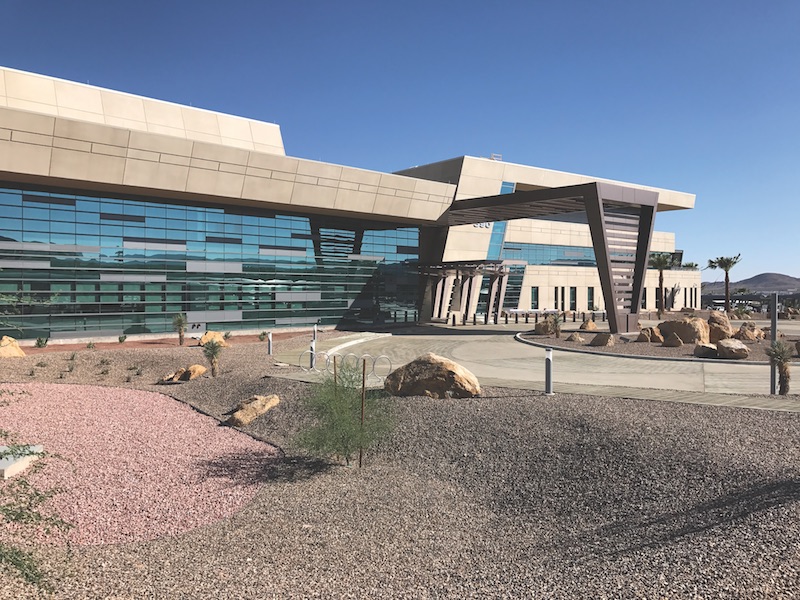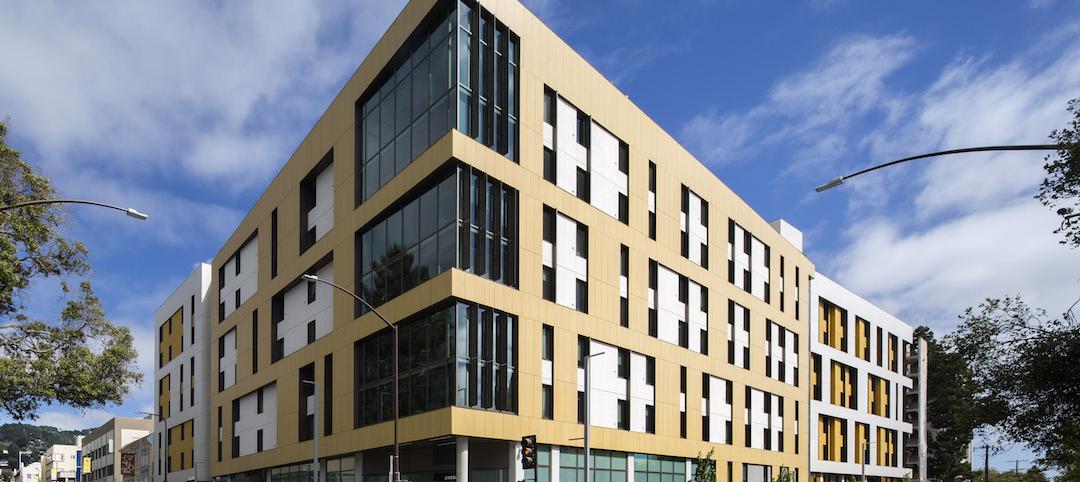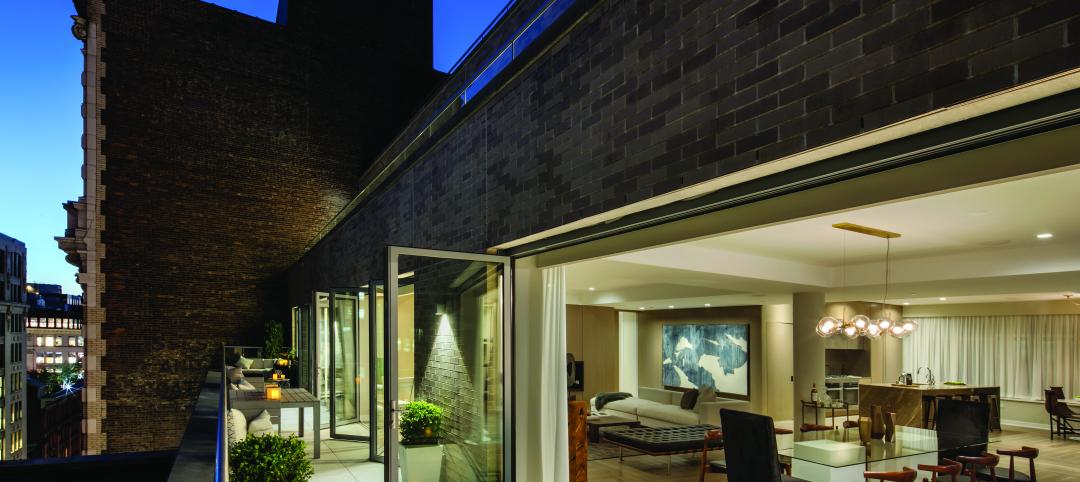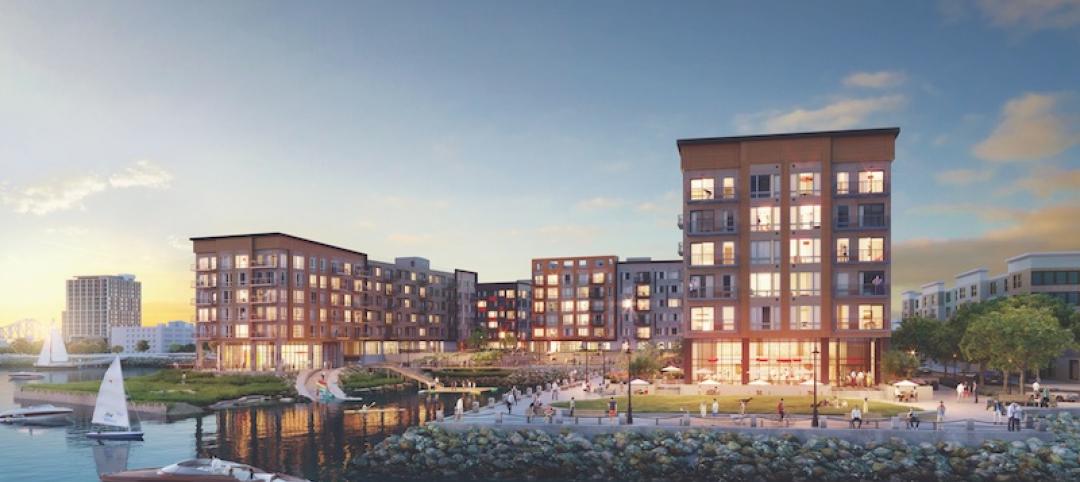Every year thousands of troops get live-fire training at the Army’s National Training Center, Fort Irwin, Calif. The soldiers and the more than two thousand military families (two-thirds of which have children) on the post will now benefit from having the first net-zero energy, carbon-neutral hospital in the country, and only the third LEED Platinum hospital in the world.
The recently completed Weed Army Community Hospital, designed by the joint venture team of RLF/Ellerbe Becket and built by Turner Construction Company, replaced an outdated 51-year-old medical facility. The new 217,000-sf facility has 55 exam rooms in two clinic wings and a 15-bed hospital. It is distinguished by a gigantic horseshoe-shaped, 2.4MW fixed-panel photovoltaic array that spreads across five acres.
Before giving a thought to PVs or other renewables, the project team explored passive design, engineering, and construction practices that would modulate the local climate. Fort Irwin lies 37 miles northeast of Barstow, in the Mojave Desert. Average daily temperatures can range from 114 to -14 Fahrenheit.
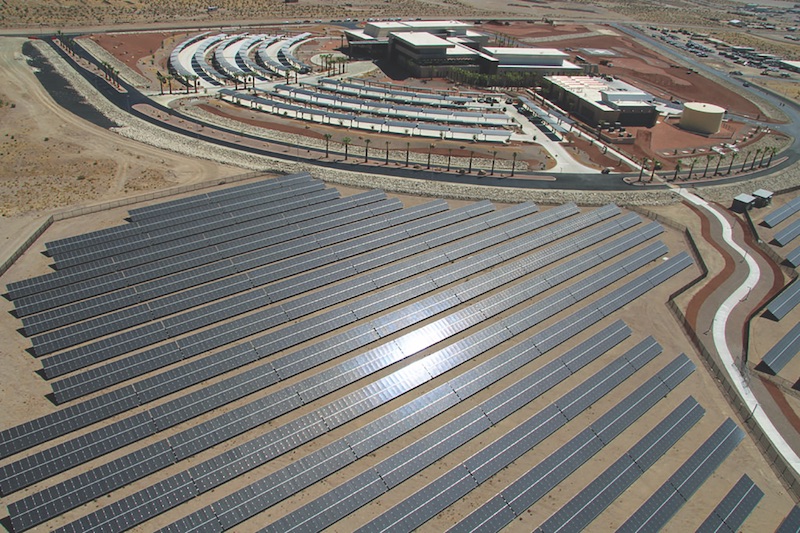 The 2.4MW PV array provides virtually all the power needs for the Weed Army Commnity hospital, clinic, and central utility plant. The $162 million facility won an Honor Award for Conceptual Design from the U.S. Army Corps of Engineers. Photo: Steven M. Langston, AIA, Design Director, RLF.
The 2.4MW PV array provides virtually all the power needs for the Weed Army Commnity hospital, clinic, and central utility plant. The $162 million facility won an Honor Award for Conceptual Design from the U.S. Army Corps of Engineers. Photo: Steven M. Langston, AIA, Design Director, RLF.
David Fishel, RLF’s Senior Energy Analyst, says the project team used seven major energy-efficiency measures that only added “a few percent” to the budget and had a payback of less than 10 years (the building’s projected lifespan is 25 years).
To reduce the energy load, the first floor of the hospital was built into a hillside. Daylight reaches 90% of occupied spaces. Insulation in the roof, walls, and floors was beefed up. High-efficiency condensing boilers and water heaters were specified, as were occupancy controls and variable frequency drives.
Turner Construction diverted 75% of construction and demolition waste from landfill and remediated the brownfield site. Bio-retention basins and open stone-lined ditches were installed for stormwater retention; the four inches of annual rain provide all the water needed for the site’s xeriscape plantings.
These and other measures brought the replacement hospital’s energy use 33% below the ASHRAE baseline and moved it closer and closer to carbon neutrality. Only then did the project team start thinking about designing a cost-effective strategy for the use of renewables.
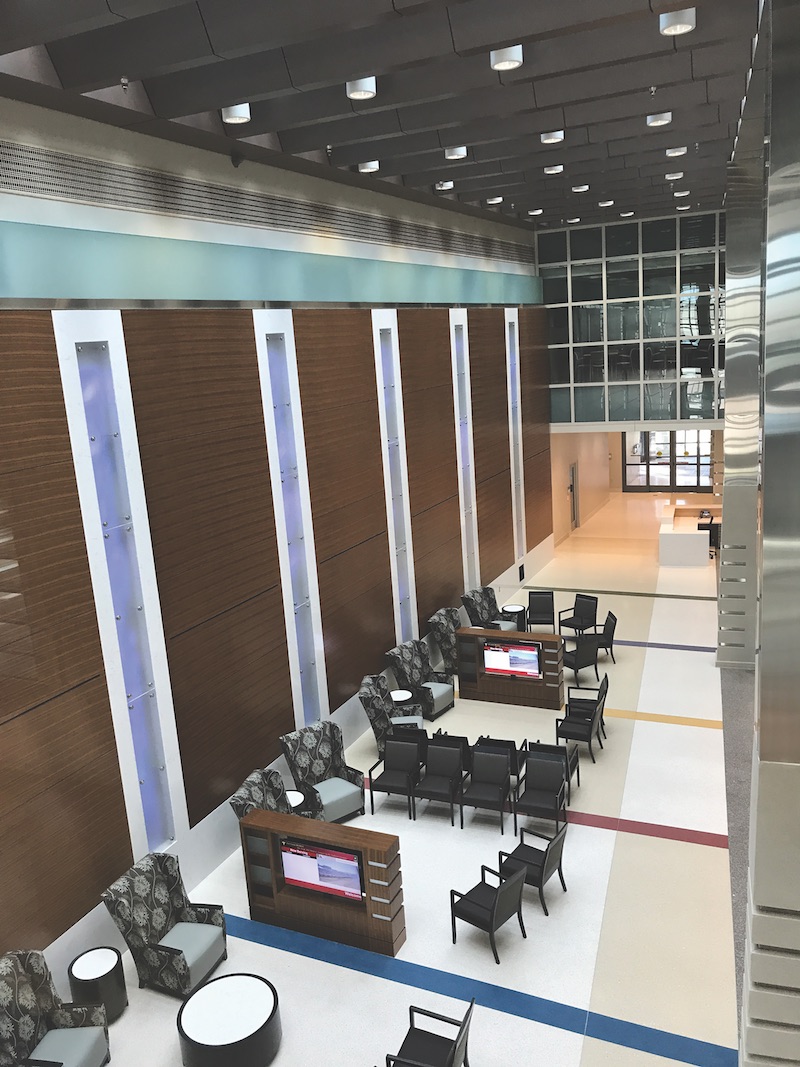 The lobby of Weed Army Community Hospital features a simulated waterfall element that uses lights, images, and sounds to emulate the experience of falling water. More than two thousand families, most of them with children, live on the post. Photo: Steven M. Langston, AIA, Design Director, RLF.
The lobby of Weed Army Community Hospital features a simulated waterfall element that uses lights, images, and sounds to emulate the experience of falling water. More than two thousand families, most of them with children, live on the post. Photo: Steven M. Langston, AIA, Design Director, RLF.
The Army requires LEED Silver certification for new projects, but the project team was not content to stop there. The hospital earned 82 of 110 possible LEED points to achieve a Platinum rating. Ten were bonus points—six for innovation and design, mostly for the PV array, but also for instituting a green maintenance program; and four were earned for overcoming “regional priority” factors, such as water scarcity.
The $162 million hospital is resilient, too. Thanks to climate conditions that are nearly perfect for solar-based systems—extremely high solar irradiance and virtually no cloud cover—the hospital will probably never be short of electricity. A solar water heating system satisfies 65% of domestic hot water demand. It also has a 550,000-gallon water storage tank, an underground sewage storage capacity of 475,000 gallons, and 50,000 gallons of diesel fuel storage.
“The hospital can operate for more than two weeks in the event all utilities are severed,” says Jeff Williams, Project Executive, Turner Construction.
Related Stories
Codes and Standards | May 2, 2022
Developer Hines, engineer MKA develop free embodied carbon reduction guide
Real estate management and investment firm Hines has released the Hines Embodied Carbon Reduction Guide. The free guide, produced with Magnusson Klemencic Associates (MKA), is the result of a two-year effort, relying on MKA’s industry-leading knowledge of carbon accounting and involvement in programs such as the Embodied Carbon in Construction Calculator (EC3) Tool.
Greenbuild Report | Oct 19, 2018
Green building is now academia's core
A closer look at new projects on three college campuses reveals more attention being paid to energy and water use.
Green | Dec 22, 2017
Green builders can use ‘big data’ to make design decisions
More and more, green project teams are relying on publicly available “external datasets” to prioritize sustainable design decisions, says sustainability consultant Adele Houghton.
Greenbuild Report | Oct 19, 2017
Can 'living well' sell?
As the competition for renters and buyers heats up, multifamily developers look to health and wellness for an edge.
Greenbuild Report | Oct 18, 2017
Rebuild, retreat, or resist
Hurricanes Harvey and Irma expose the necessity—and limitations—of resilient design and construction measures.


